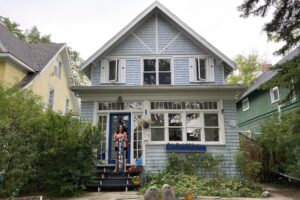In my opinion, any new building construction, especially residential, should be sprinklered. The cost of incorporating sprinklers in new construction is relatively small, and sprinklers save lives….so it seems like a no-brainer. Don’t just take it from me that sprinklers save lives, this 2018 blog post from FIREFighting in Canada shares findings from a study of more than 439,000 fire incidents over a 10 year period. As stated in the post, statistics of note are:
The death rate per 1,000 for fires in sprinklered homes was 0.9, compared to 3.3 in non-sprinklered ones.
Only 10 per cent of injuries in fires in sprinklered homes were serious, compared to 23 per cent in non-sprinklered ones.
Risk of death was not equal among ages and genders. People age 65 and up made up 30 per cent of the fire deaths in single-family dwellings and more than 33 per cent in apartment buildings. Males represented about two-thirds of all those injured or killed in a residential fire.
Regardless of my opinion that every building should be sprinklered, the Building Code is what decides whether sprinklers are required or not.
Building Code Requirements
Sprinklers are required in the building if the construction Article (Articles 3.2.2.20. to 3.2.2.90.) states so in one of the Sentences (it is also typically written in the title of the Article). Kilo Lima Villager and Building Code Consultant at Celerity Engineering Ltd. in Victoria, BC, Marc Showers, does a great job explaining how to find the applicable construction Article in his blog post Building Classifications in Canada.
In this downloadable resource, I have summarized sprinkler and construction requirements from building classification Articles 3.2.2.20. to 3.2.2.90. in a quick reference table format. Further reference to the Building Code should always be made for specifics around construction type, occupancy classification, building size, number of storeys and streets. These are all related to defined terms from Article 1.4.1.2. in Division A.
Municipal Bylaw Requirements
Another thing to keep in mind are that some local building bylaws require sprinklers, even if the Building Code does not, so always check with the building bylaw specific to the Authority Having Jurisdiction (AHJ) you are working in. From my personal experience, there are many AHJs in British Columbia that require sprinklers in most buildings of residential occupancy (typically 2/3 or more units).
Best Practice
Vancouver is the only city in Canada that has its own Building Code (Vancouver Building Bylaw 2019, or VBBL). There are many things I love about the more progressive VBBL, one of which is that they require all new buildings to be sprinklered (with a few exceptions). The requirement in found in Article 1.3.3.6. of Division A in the VBBL.
As noted above, I believe any new construction should be sprinklered. Not only is the building safer, but there are also various relaxations provided in the Building Code if the building is sprinklered. Even if the Building Code does not require sprinklers, there may be design reasons for installing sprinklers. These are listed below, and explained further in this downloadable resource.
- Extended travel distances,
- Additional windows (unprotected openings),
- Combustible construction allowances,
- More flexibility for interconnected floors,
- Waivers for some fire separations and roof ratings, and
- Fewer locations for Fire Department access routes.
In regards to small residential buildings, the Home Fire Sprinkler Coalition has many resources and information including:
Want to Dive Deeper?
The Building Codes: Part 3 Fundamentals course is available for purchase in the Kilo Lima Code School, and you can register for a free preview of Module 1 here, where Kelsey explains all the information in this post in further detail.



